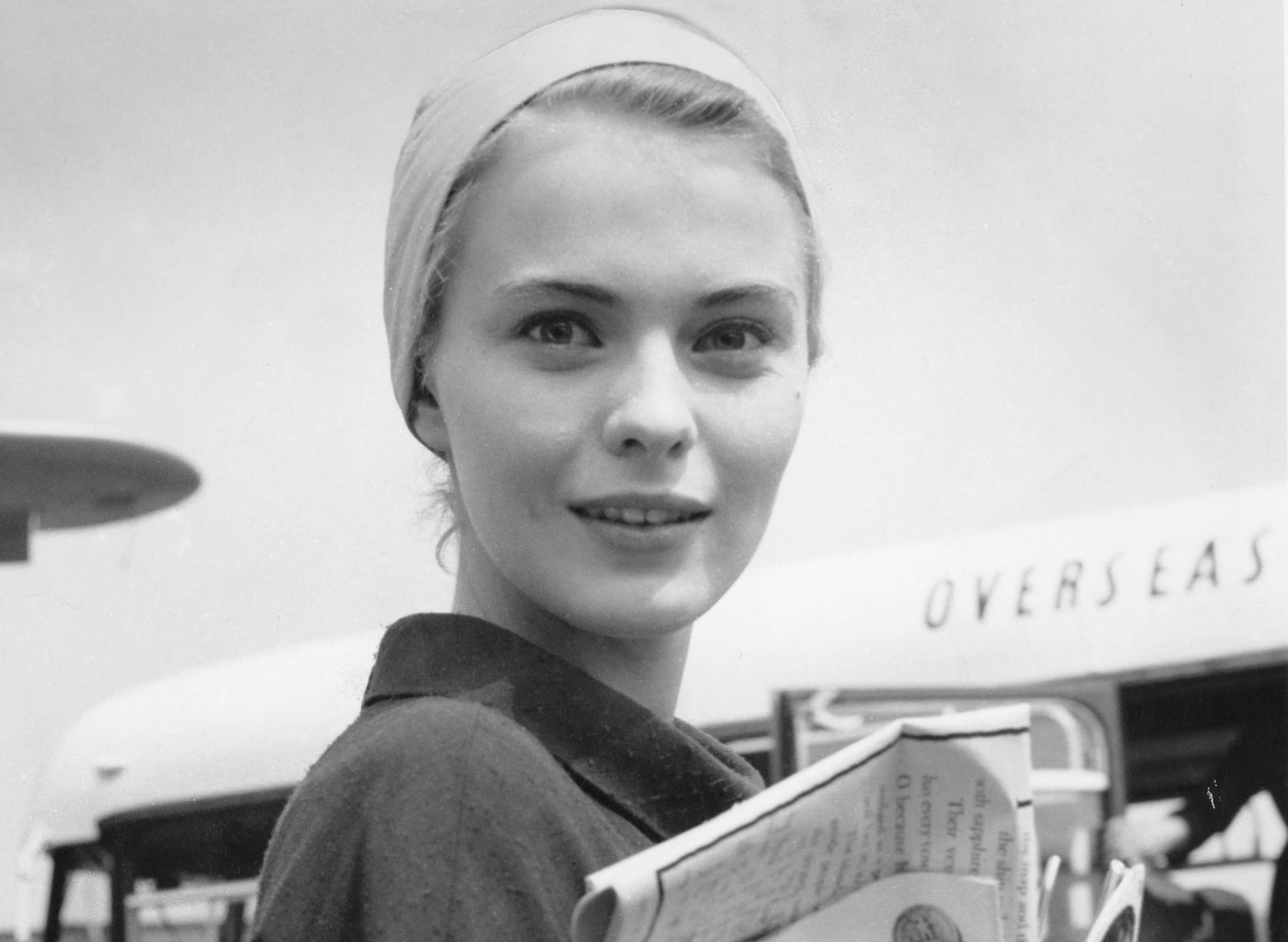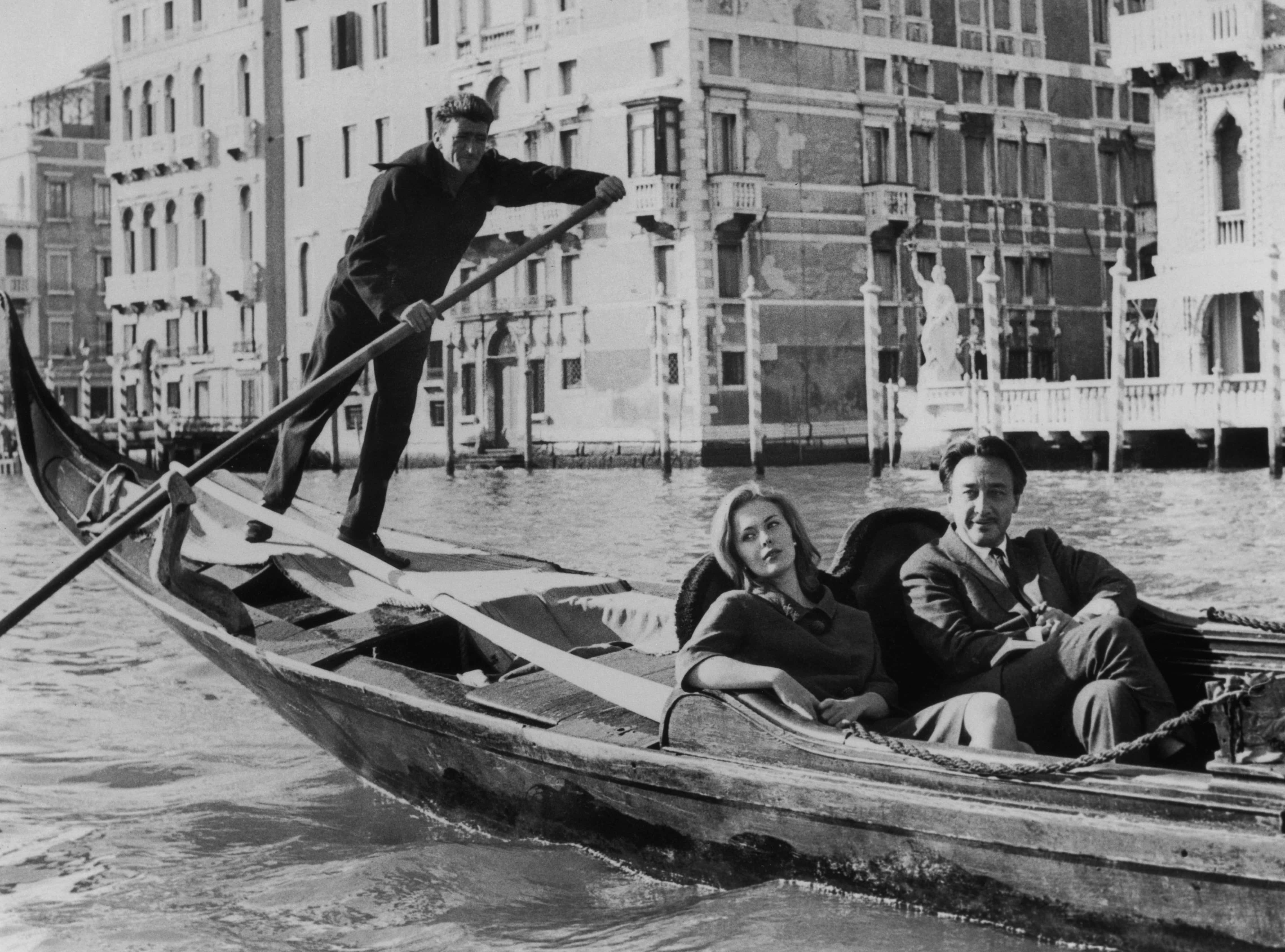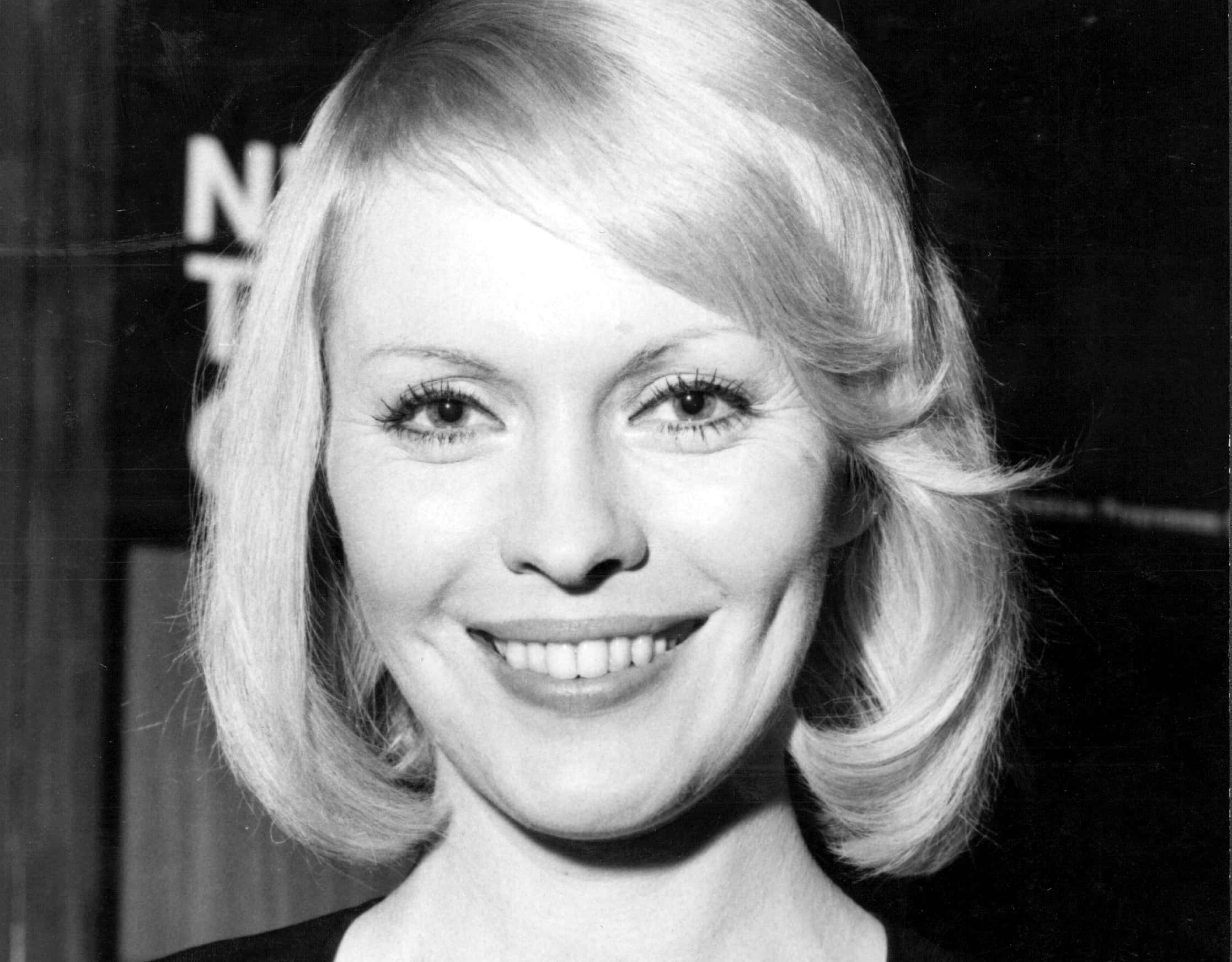Jean Seberg, Star Of The French New Wave
Jean Seberg tragically took her own life at just 40 years old. In that short time, she'd seen more heartbreak than anyone should ever face.

1. Just a Small-Town Girl
Jean Seberg was born in Marshalltown, Iowa, on November 13, 1938. Her father, Edward, was the local pharmacist, while her mother, Dorothy, worked as a substitute teacher.

2. Home Swede Home
Seberg was of Swedish extraction; her original family name was Carlson. When her grandfather immigrated to America from Sweden in 1882, he decided there were simply too many Carlsons. He took the name Seberg as a nod to the seas and mountains of his homeland.
3. Babysitter’s Club
As a teenager, Seberg earned some spare cash by working as a babysitter. One of her clients grew up to be a Tony-nominated actress. Mary Beth Hurt (born Mary Beth Supinger) is best known for her roles in The World According to Garp and The Age of Innocence.
4. An Offer He Couldn’t Refuse
Seberg was a huge movie fan. She was especially enamored with the smoldering young actor Marlon Brando. Seberg went so far as to write Brando a letter, inviting him to come visit her parents’ house. When they met, years later, Brando asked if the invitation was still open.
5. Minor Saints
A young Seberg enrolled at the University of Iowa to study theatre. At the last minute, she decided to try her hand in Hollywood, instead, despite only having been in high school productions and a single summer of professional acting experience. She was just three weeks shy of her 18th birthday when she won the lead in Otto Preminger’s Joan of Arc biopic Saint Joan.
6. Method Acting
While filming Saint Joan’s "burning at the stake" scene, there was an accident with one of the special effects, and Seberg suffered painful burns on her stomach. Though she was otherwise uninjured, her reaction to the sudden fire was so realistic that Preminger kept some of the shot in the film.
7. Last Chance
Seberg beat out 18,000 other actresses for the coveted role of Joan of Arc. Seberg’s inexperience showed—she was later quoted as saying, "I have two memories of Saint Joan. The first was being burned at the stake in the picture. The second was being burned at the stake by the critics". However, Preminger believed in the young actress and cast her in his next film, Bonjour Tristesse. Once again, Seberg’s performance was panned by the critics, and though Preminger continued to show his support for Seberg, the two never worked together again.
8. A Breath of Fresh Air
There was one person who appreciated Seberg’s performance in Bonjour Tristesse: French auteur Jean-Luc Godard, who cast Seberg as the lead in his first major film, A bout de souffle, or Breathless. Breathless became a cornerstone of French "New Wave" cinema and elevated Seberg to international stardom.
9. Au Naturel
Breathless was filmed on a shoestring. To save money, Godard shot all scenes in natural light and Seberg was forced to forego makeup. In fact, her salary made up a full sixth of the film’s total budget.
 Breathless (1960), Les Productions Georges de Beauregard
Breathless (1960), Les Productions Georges de Beauregard
10. Who’d’ve Thunk It
Already used to the slick, professional style of filming practiced in Hollywood, Seberg had a hard time adjusting to Godard’s idiosyncratic, sometimes haphazard, direction. The two often sparred over how Seberg should deliver her lines. Seberg was shocked when the film became a success.
11. Second Choice
Another legendary French New Wave director, François Truffault, was so taken with Seberg’s performance in Breathless that he tried to cast her in his 1973 film Day for Night. Sadly, Truffault was unable to get in touch with Seberg, and had to cast Jacqueline Bisset instead.
12. Husband #1
In 1958, Seberg married François Moreuil, a French lawyer. Not long after the marriage, the union turned "violent", to use Moreuil's words. Seberg divorced him in 1960. It would be the first of three official marriages for Seberg.
13. Opposite Directions
Moreuil directed Seberg’s 1961 film Love Play. The couple divorced shortly after filming wrapped. Seberg called the movie "a farewell present".
14. Husband #2
In 1962, Seberg married Romain Gary, a French novelist and diplomat. 25 years her senior, Gary left his wife to marry the film star. Their eight-year marriage resulted in the birth of a son, Diego Gary.
15. Feeling Homesick
Though she was quickly becoming one of Europe’s biggest stars, Seberg found working in the French film industry unfulfilling. She lived in France for the remainder of her life but continued to dream of a Hollywood movie career that never fully materialized. Consequently, her body of work is split between French critical successes, moderate Hollywood successes like Paint Your Wagon and Airport, and unfortunate flops.
16. Lilith Unfair
Seberg’s 1964 film, Lilith, co-starring Warren Beatty, received such a negative response from American critics that director Robert Rossen pulled it from the Venice Film Festival. Despite the bad press, Seberg considered it her favorite performance out of all the films that she had acted in.
 Lilith (1964), Columbia Pictures
Lilith (1964), Columbia Pictures
17. Return to the Big Screen
Seberg’s life once again became the subject of art in 2019. Seberg is a political thriller about the FBI’s attacks on the troubled actress and is scheduled to be released in December 2019 with Kristen Stewart in the title role. However, initial reviews have been lukewarm at best.
18. It’s My Party
Every year, Seberg’s hometown of Marshalltown, Iowa, honors her memory with the Jean Seberg Festival of the Arts.
19. Missed Connections
Seberg’s singing parts for the film Paint Your Wagon were performed by Anita Gordon. Gordon, once a radio and variety show regular, had largely faded from view by the late 60s, but producer Alan Jay Lerner felt her voice would be closest to Seberg’s speaking voice. After several failed attempts to find Gordon, Lerner tried calling the Screen Actors Guild—and he couldn't believe who was on the other end of the line.
The call was answered by none other than Anita Gordon who, having slid into obscurity, was working as a telephone operator.
20. Totally Radical
In the late 1960s, Seberg began associating herself with a number of radical groups, most notably the Black Panthers. Seberg wasn’t just being provocative, however; she was actively involved in the group’s activities. According to one Black Panther leader, Seberg donated huge sums of money, and at one point was even detained for misdemeanor charges. At the time, people thought the arrest was connected to Seberg running guns for the Black Panther’s militant wing.
21. Malcolm Ex`
Seberg had always supported anti-racist causes, dating back to her teenage years in Iowa. Her involvement with the Black Panthers seems to stem from a brief relationship with the activist Hakim Jamal. Jamal was a fervent supporter of the Black radical leader Malcolm X.
22. Stage Name
Being involved with the Black Panthers could have endangered Seberg’s Hollywood career. To keep her activities secret, she used a code name, "Aretha".
23. En Español
Seberg spoke fluent Spanish. In 1970, she took a role in a western called Macho Callahan, which was to be filmed in Mexico. Seberg made herself very valuable during the production by acting as a translator between the cast, who were American, and the crew, who were mostly local Mexicans.
24. Husband #3
In 1972, Seberg married director Dennis Berry. Like her first husband, Berry soon turned abusive; though Seberg would separate from him, they never formally divorced.
25. Husband #4?
Seberg later began a relationship with Ahmed Hasni which would last until her passing. There are two versions of this relationship. Most scholars say that Seberg was married to Hasni through Nikah ‘urfi, a form of customary marriage among the Sunni Muslim faith. One of Seberg's biographers claims that she and Hasni merely received a blessing. Why not go all the way with a ring? It might have something to do with the fact that Seberg hadn't actually divorced her third husband Berry...
26. Duck and Cover
Seberg’s final completed film was a 1976 German adaptation of the Henrik Ibsen play, The Wild Duck.

27. Gone Missing
On August 30, 1979, Jean Seberg vanished. She was found dead and decomposing nine days later in the back seat of her car, with an empty bottle of barbiturates and a note which read "Forgive me, I can no longer live with my nerves".
28. All Roads Lead to Romain
The night she disappeared, Seberg had gone to see the movie Womanlight, directed by Costa-Gavras. Womanlight was based on a novel by Seberg’s ex-husband, Romain Gary.
29. Writer’s Block
One year after Seberg’s passing, her ex-husband, Romain Gary, took his own life. In a final note, Gary was careful to point out that his demise had nothing to do with Seberg’s. He simply felt that his work as an author was done, as he had nothing else to say.
30. As Fate Would Have It
Seberg starred opposite Frederick Stafford in two films, The Looters (1967) and an Italian film called Bianchi cavalli d’Agosto. Like Seberg, Stafford would die of tragic circumstances in the summer of 1979, when his plane collided with another over Lake Sarnen, Switzerland.
31. We Meet Again
In 1995, actor and director Mark Rappaport made a fictional docudrama about Seberg. From the Journals of Jane Seberg features narration "by Seberg herself". Seberg was voiced by her old babysitting client, Mary Beth Hurt.
32. Too Soon
A musical based on Seberg’s life premiered at London’s National Theatre in 1983. Written by Julian Barry, and with Kelly Hunter and Elizabeth Counsell splitting the title role, Jean Seberg received lukewarm reviews and closed after just four months.
33. The Man with No Shame
Not many people know about Seberg's most shocking affair: She began a brief relationship with Clint Eastwood while working on the musical western Paint Your Wagon. Not only was Eastwood already married, but he was also seeing another actress on set! Eastwood ghosted Seberg as soon as filming wrapped.
34. Jumping to Conclusions
Eastwood’s indifference was difficult for Seberg. She had divorced her husband, expecting that she and Eastwood would get married.
35. Who’s Your Daddy?
While on the set of Macho Callahan, Seberg fell in love with a student and political activist named Carlos Navarra. She soon became pregnant, with many people believing that the baby was Navarra's. While we'll never know what really happened, we do know that Romain Gary claimed the baby was his, despite his and Seberg’s estrangement.
36. Unhappy Anniversary
The birth of a child should be a happy occasion, but Nina Hart Gary's tragically brief life brought nothing but pain. She was born, two months premature, on August 23, 1970, and she perished just two days later. Doctors suspected that an attempted overdose on sleeping pills by Seberg while pregnant contributed to the infant’s passing. Nina’s passing exacerbated Seberg’s already declining mental health—according to Gary, Seberg attempted to take her own life annually on the anniversary of Nina’s death.
37. I Spy
Seberg’s mental health was further harmed by the FBI. In retaliation for her involvement in the Black Panther Party, the FBI, as part of their COINTELPRO program, began a public smear campaign against Seberg. She was stalked, robbed, and had her phone tapped. Though the FBI claims not to have a file on Seberg, they're often one of the agencies suspected of hounding Seberg, alongside the CIA and Secret Service.
38. A Stack of Libels
While Seberg was pregnant, the FBI claimed that the baby had been fathered by Raymond Masai Hewitt, a leader of the Black Panthers. Several publications ran the story, including the Los Angeles Times and Newsweek. Seberg and Gary sued Newsweek, and were awarded $200,000 in damages; Newsweek was also ordered to run an apology letter to Seberg.
Sadly, it was too late—the damage was already done. The stress of the situation is widely believed to have contributed to Seberg's overdose and the subsequent loss of her child.
39. Acting Suspicious
Seberg’s passing was ruled to be a case of someone taking their own life. While she did have a history of depression and attempts to end her life, some believed there was a darker cause: that her partner, Ahmed Hasni may have had something to do with her passing. He had been spending large sums of her money on failed business ventures and, allegedly, Seberg had even fled Spain to escape his brutality.
40. J’Accuse!
Romain Gary placed the blame elsewhere: he publically blamed his ex-wife’s demise on the FBI. According to Gary, their long campaign of harassment against the actress damaged her mental health and drove her to take her own life.
41. For Your Information
Naturally, Gary’s outlandish accusation was met with skepticism—but it wasn't long before the truth came out. Just six days after Seberg’s body was found, a Freedom of Information request forced the FBI to admit that, yes, they had spent years stalking and spying on Jean Seberg. They denied any involvement in her demise.
42. Booze Clues
FBI involvement in Seberg’s passing was never formally investigated. French authorities did disclose, however, that they were charging "persons unknown" in connection to her passing, citing a high level of booze in Seberg’s system, but no empty bottles found at the scene.
















































